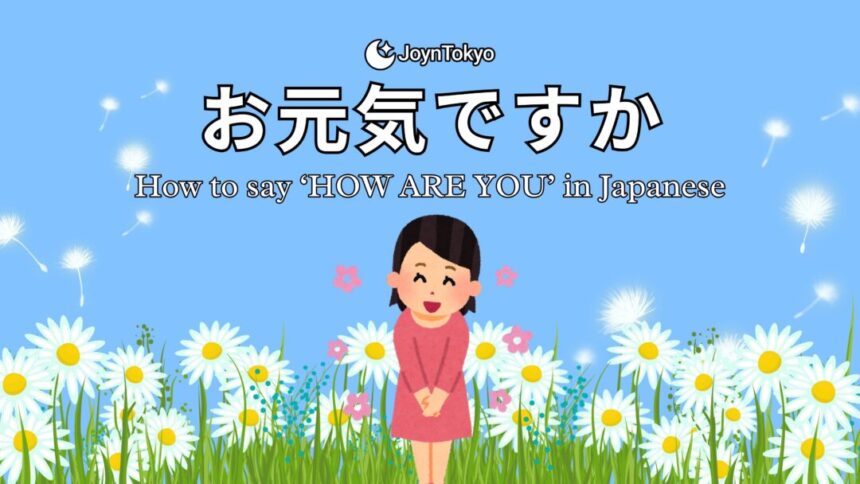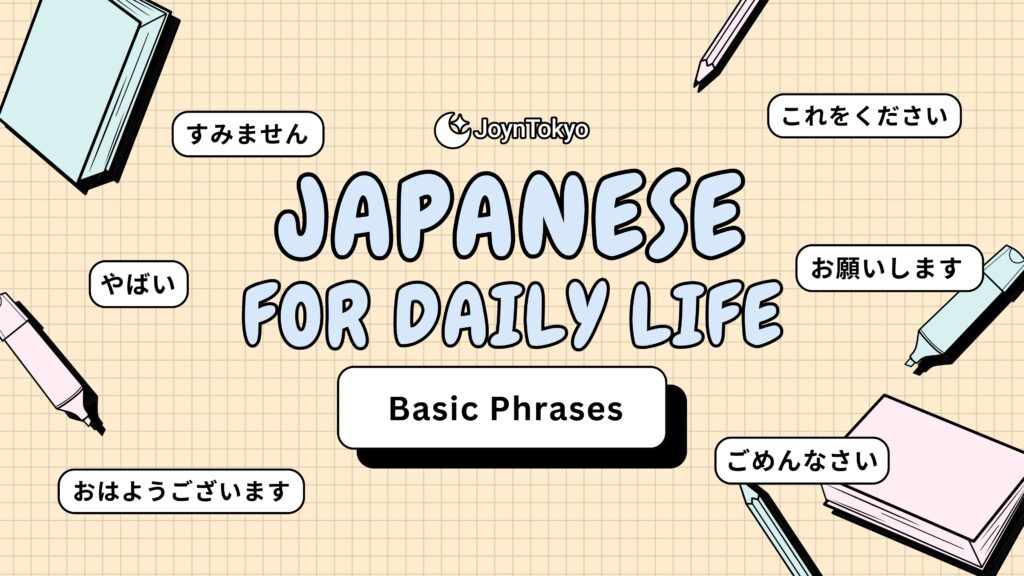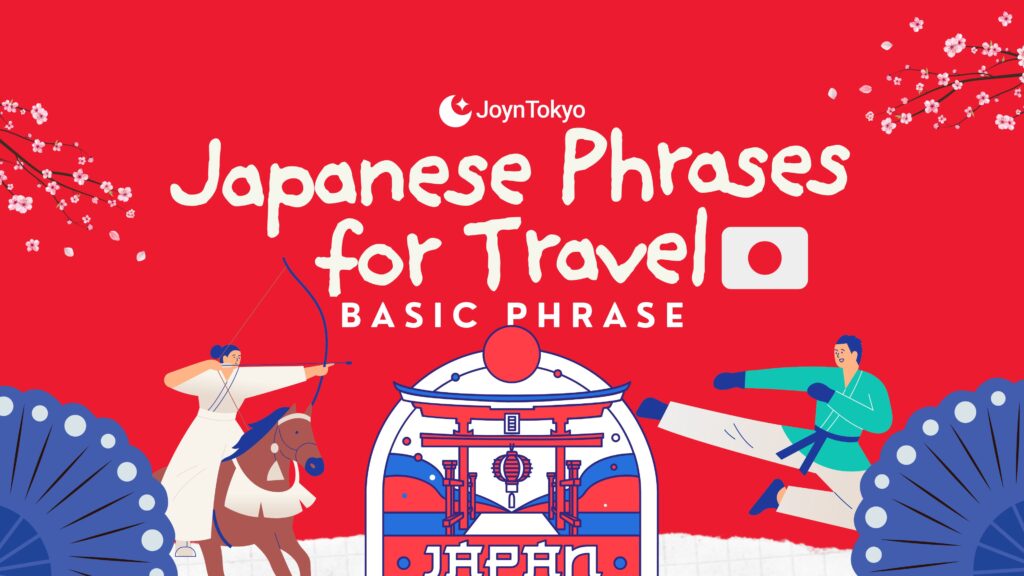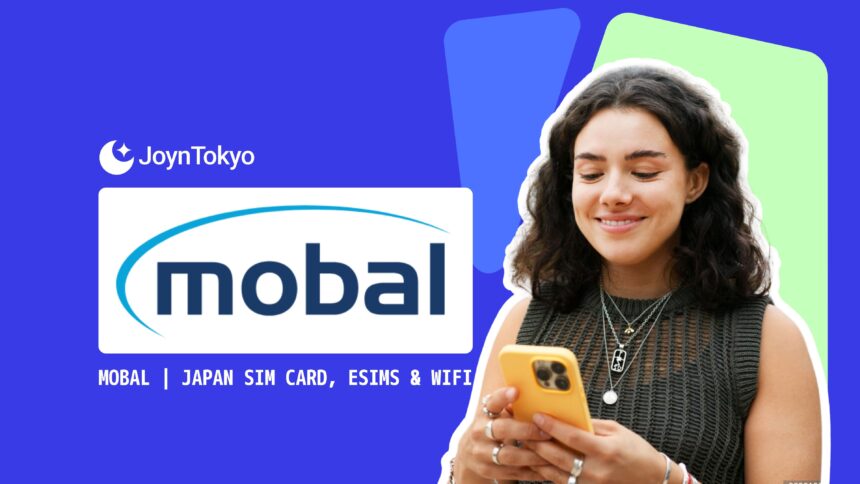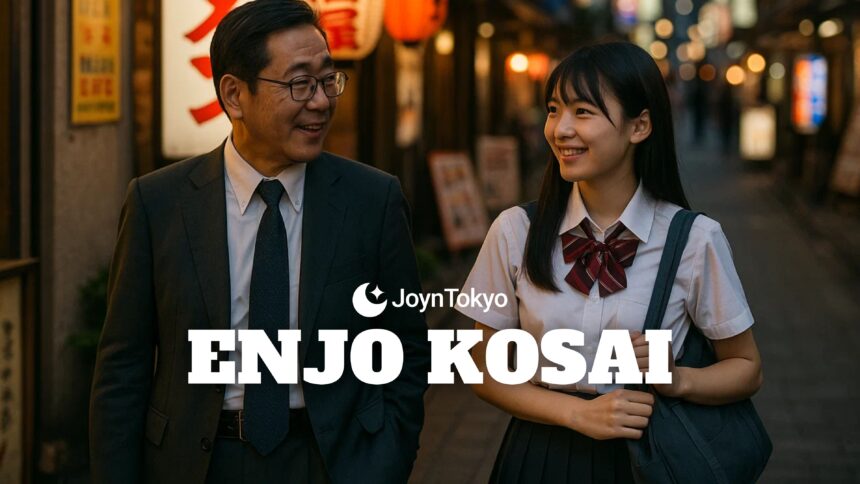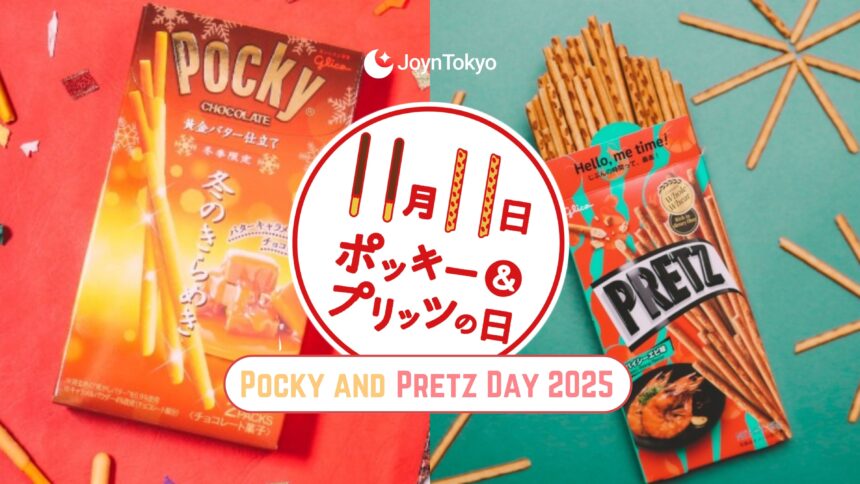In Japanese, greetings are more than polite formulas, they reflect relationships, context, and social awareness. The phrase “how are you” exists, but it is not used as casually or as frequently as in English. Knowing the right expression, from the formal Ogenki desu ka (お元気ですか) to casual options like Genki? (元気?), helps learners avoid awkwardness and sound more authentic.
Do Japanese People Say “How Are You”?
In English, “how are you” often works as a filler phrase to start conversations. In Japanese, daily greetings take a different path. Instead of routinely asking about someone’s well-being, people rely on set phrases such as Konnichiwa (こんにちは) for “hello” or Ohayō gozaimasu (おはようございます) for “good morning.”
When Japanese speakers do ask “how are you,” it usually comes in the form of Ogenki desu ka (お元気ですか) — but this is used mainly when reconnecting after some time apart, not during everyday encounters. Understanding this subtle difference is key to speaking naturally.
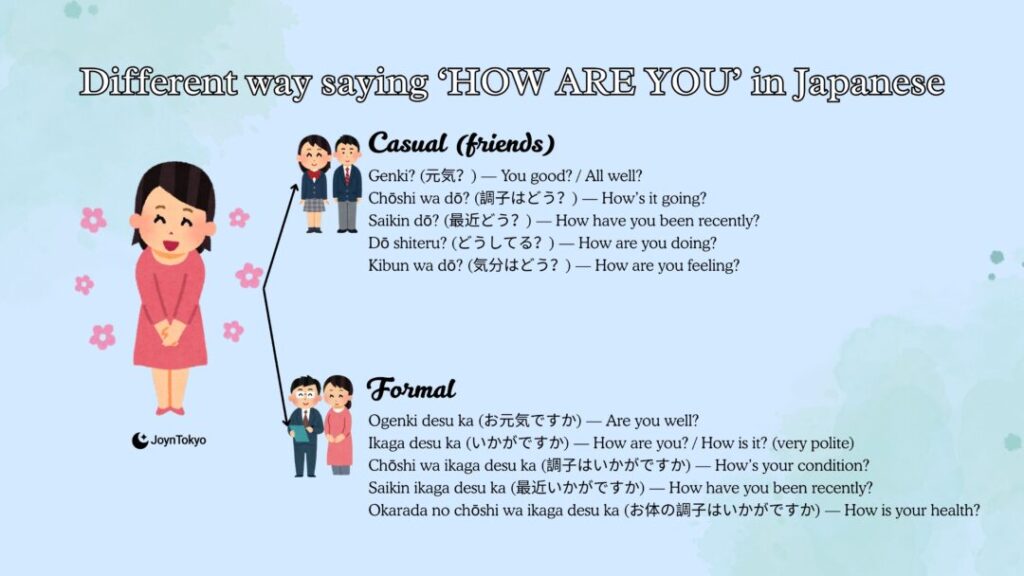
The Formal Way to Say “How Are You”
Ogenki desu ka (お元気ですか) is the most widely taught way to say “how are you” in Japanese. The word Genki (元気) means healthy, energetic, or well, and with the honorific o- and polite structure desu ka, it becomes a respectful question.
- Best used in letters, emails, or when speaking with colleagues or acquaintances.
- More appropriate for formal settings than casual conversations.
- A common answer is Genki desu (元気です), meaning “I’m fine” or “I’m doing well.”
Think of it as a polite check-in rather than a standard greeting.
Formal Phrase List:
- Ogenki desu ka (お元気ですか) — Are you well?
- Ikaga desu ka (いかがですか) — How are you? / How is it? (very polite)
- Chōshi wa ikaga desu ka (調子はいかがですか) — How’s your condition?
- Saikin ikaga desu ka (最近いかがですか) — How have you been recently?
- Okarada no chōshi wa ikaga desu ka (お体の調子はいかがですか) — How is your health?
Casual Variations of “How Are You” in Japanese
Among friends, classmates, or family, shorter and more relaxed forms replace the formal Ogenki desu ka (お元気ですか). These expressions are natural in everyday conversations and show comfort and closeness without sounding stiff. They are best suited for peers, relatives, or casual settings, where a lighter tone feels more appropriate.
Casual Phrase List:
- Genki? (元気?) — You good? / All well?
- Chōshi wa dō? (調子はどう?) — How’s it going?
- Saikin dō? (最近どう?) — How have you been recently?
- Dō shiteru? (どうしてる?) — How are you doing?
- Kibun wa dō? (気分はどう?) — How are you feeling?
Common Ways to Respond to “How Are You” in Japanese
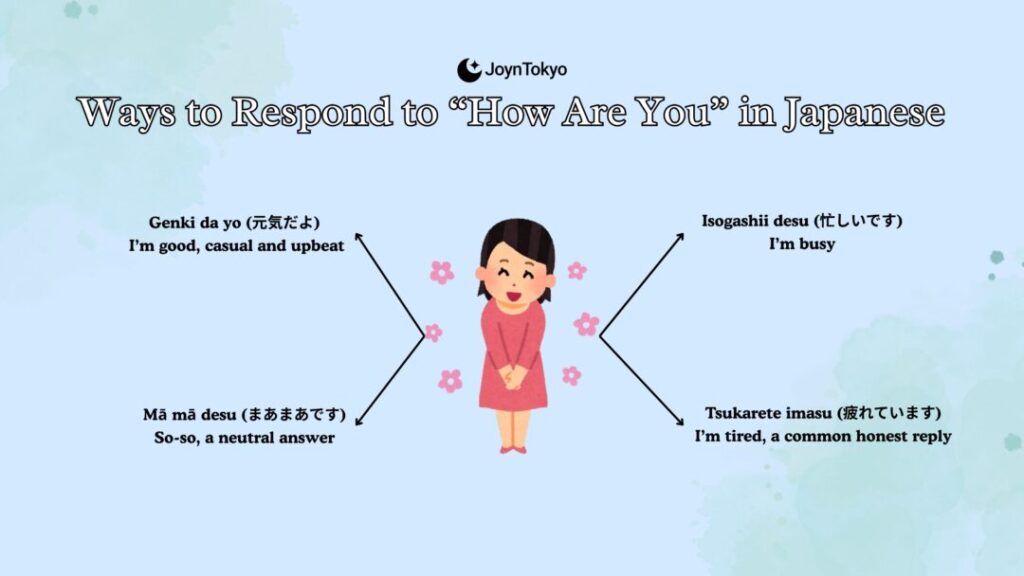
Japanese responses to “how are you” go beyond a single phrase. Instead of always saying “I’m fine,” speakers often share their current state. Some useful replies include:
- Genki da yo (元気だよ) — I’m good, casual and upbeat
- Mā mā desu (まあまあです) — So-so, a neutral answer
- Isogashii desu (忙しいです) — I’m busy
- Tsukarete imasu (疲れています) — I’m tired, a common honest reply
Varying your answers makes conversations more genuine and avoids sounding scripted.
Cultural Nuance: Why It’s Different from English
Unlike English, Japanese doesn’t treat “how are you” as a default opener. Asking directly about feelings or health can feel intrusive if overused. Instead, Japanese greetings reflect shared situations, time of day, or work context. A common workplace phrase is Otsukaresama desu (お疲れ様です), meaning “thank you for your hard work,” which functions like a greeting while acknowledging effort.
For learners, overusing Ogenki desu ka (お元気ですか) can come across as stiff or unnatural. The goal is to recognize when a simple hello, nod, or contextual phrase better fits the moment.
How to Write “How Are You” in Japanese
When typing Japanese on an English (romaji) keyboard, you use a Japanese IME (Input Method Editor). By typing in romaji, the IME automatically converts your input into hiragana, which you can then confirm as-is or change into kanji by pressing the spacebar.
Here are the standard forms with their correct typing sequences:
- Ogenki desu ka (お元気ですか) — formal version, used in messages or with acquaintances.
- Type:
ogenki desu ka→ おげんきですか → convert with space → お元気ですか
- Type:
- Genki? (元気?) — casual version, perfect for texting friends.
- Type:
genki→ げんき → convert with space → 元気
- Type:
Kanji vs Hiragana in Writing
- Kanji (Genki 元気, Tsukare 疲れ) is preferred in formal writing, messages, or study materials.
- Hiragana (げんき, つかれて) is acceptable in casual texts, notes, or when learners are not confident with kanji.
Final Thoughts: Mastering “How Are You” in Japanese
Asking “how are you in Japanese” is less about memorizing a single phrase and more about reading the situation. Formal settings call for Ogenki desu ka (お元気ですか), while casual conversations flow better with Genki? (元気?), Chōshi wa dō? (調子はどう?), or Saikin dō? (最近どう?). The response should be just as flexible, ranging from a cheerful “I’m good” to an honest “I’m tired.”
By learning not only the words but also the cultural expectations behind them, you’ll avoid awkwardness and connect more smoothly with Japanese speakers. In the end, the secret to using “how are you” naturally in Japanese lies in choosing the right expression for the right person at the right time.
Learn more Japanese Basic Phrases!

